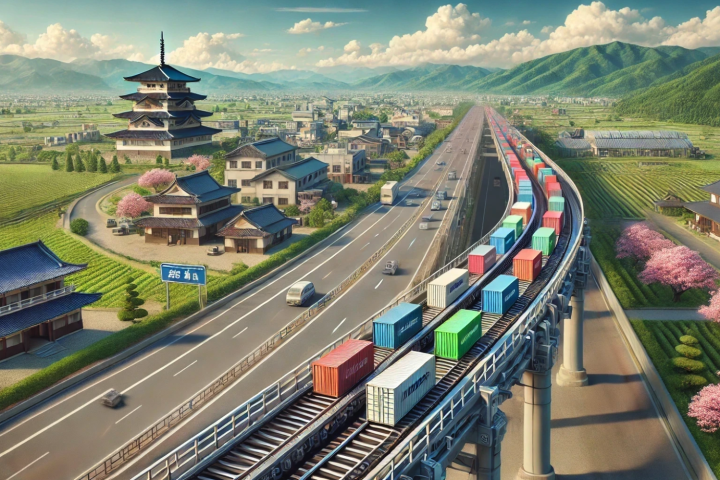Hopes for a return to some kind of normalcy amidst the fog of a global pandemic rest on the development of some kind of COVID-19 vaccine. With over 100 different kinds of vaccines at various stages of development perhaps the most consistent message we are continually hearing is the mantra, “12 to 18 months”.
This somewhat abstract timeframe has been echoed by politicians and researchers around the world, but what exactly does it mean?
A 2013 study from Dutch researchers examining vaccine development timelines suggested it takes an average of 10.71 years to move a vaccine from pre-clinical stages to market registration. Compressing this down to 12 to 18 months may not be impossible, but it certainly is ambitious.
But – perhaps most importantly – these estimates generally only refer to clinical development timeframes. The point where a vaccine is determined to be successful enough to deploy in a general population is not the end of the process. No, it's just the beginning, especially in the face of a global pandemic presenting the potential need to immunize the entire world’s population.
What happens when a team of researchers somewhere in the world hold up a vaccine and say, “We’ve got one that works, let’s go!”
How long will it take to vaccinate 7 billion people?
How do we manufacture such a massive volume of vaccine?
And ... who will get it first?
When is there enough clinical evidence to move forward?
Professor Kim Mulholland has spent over 30 years researching the development of vaccines and evaluating how to introduce new vaccines into local populations. He spent several years working with the World Health Organization in Geneva, establishing pneumococcal vaccine trials in Africa, before spending time at the London School of Hygiene and Tropical Medicine. He is currently based at the Murdoch Children’s Research Institute in Melbourne, Australia, where he leads a number of ongoing vaccine field studies.
Professor Mulholland says if we are getting positive indications one of the experimental vaccines is working, which would still be at least six months away, the first question that will need to be asked is whether we have enough information to move into mass distribution.
“There will always be more information coming, but the question is, at what point do you say, OK, there is more information coming but we’re going to move," he says. "This has traditionally been a stumbling block for vaccine development.”
Looking at the Oxford University COVID-19 vaccine currently in development as an example, its primary trial cohort is aged 20 to 50. Generally, vaccine testing would subsequently expand its trial to incorporate broader demographics after it initially demonstrates safety and efficacy. But during such an unprecedented time as this, Professor Mulholland expects a swifter roll-out, without the traditional delays from market approval bodies requiring the usual expanded demographic data.
“I think if they decided that the vaccine was safe and effective [in the initial demographic trialed], then they would probably go into an early phased roll-out, which would depend on the amount of vaccine that is available,” says Professor Mulholland.
At this point we face the two fundamental questions hovering over this entire hypothetical scenario. Who gets the first wave of vaccines? And how quickly can production ramp up to produce the vaccine in the massive quantities necessary to treat billions of people?
The rich versus the poor
Seth Berkley is chief executive of Gavi, the Vaccine Alliance, an organization founded in 2000 to help ensure developing countries can access and afford the same life-saving vaccines available to richer nations. In a recent New York Times editorial Berkley summed up the enormous hurdles we will face once we have a relatively efficacious vaccine.
“The danger is that richer nations will buy up the supply for their own use or prevent exports of vaccines developed within their borders as countries scramble to protect their citizens or stockpile for future outbreaks,” writes Berkley. “Another concern is that manufacturers might restrict sales to the highest bidder.”
Both of these concerns are also echoed by Professor Mulholland, suggesting initial vaccine distribution may rely on which vaccine is successful, and where it was being developed. Again, focusing on the Oxford vaccine as a hypothetical, the first roll out into a community may in this instance likely be the British community, determined by how much vaccine is available at the time.
Laying the track for future manufacturing and distribution, the Oxford group recently joined forces with global pharma giant AstraZeneca. The collaboration is aimed at accelerating worldwide distribution and manufacturing of the vaccine, depending on its ultimate success in trials of course.
Professor Mulholland does note, however, that if other vaccines present successful trials, there may be a whole raft of political issues surrounding their distribution. Pharma company Moderna, for example, is currently working with the National Institutes of Health in the United States to accelerate trials into its novel RNA-based COVID-19 vaccine. If that particular vaccine proves efficacious it seems unlikely the US government will not prioritize the first few hundred million doses for its own citizens.
Pharma giant Pfizer has also thrown its hat into the COVID-19 vaccine ring, working with German company BioNtech to accelerate manufacturing capabilities ahead of clinical trial results. Pfizer suggests if BioNtech’s experimental vaccine, also RNA-based, is looking successful later this year it could have between 10 and 20 million doses ready to go by the end of 2020.
"But assuming [efficacy] is demonstrated, we are looking to ramp up manufacturing rather quickly to have around 10 to 20 million doses by the end of this year, which are expected to then of course be used in an emergency type of setting,” explained Pfizer’s global head of vaccines, Nanette Cocero.
Again, it is unclear who would get those first 10 to 20 million vaccines ...

If one works, then others should
Although there are over 100 vaccines currently in development, not every single one of them is novel. In fact, many vaccines in development are variations based on similar hypotheses. So one vaccine proving successful will spur a number of other similar vaccines forward.
The Oxford vaccine, for example, is using a method that helps the body develop an immune response to the spike protein used by the novel coronavirus to enter human cells. Professor Mulholland believes if early indications from the accelerated Oxford trials later this year begin to show this technique as safe and efficacious, then a number of other vaccines targeting the coronavirus spike protein may be subsequently successful. This means the world would not ultimately be relying on a single vaccine, but instead a number of different, but somewhat similar, vaccines could simultaneously be produced and administered around the globe.
“If [targeting the spike protein] proves to be an effective strategy then it's more likely than not there will be a string of successful vaccines,” says Professor Mulholland. “And that might be the best outcome. If I was going to bet on something, I would bet on that. There’ll be more than one that will be successful, and they’ll be based on the spike protein.”
Scaling up
So we may reach a point where millions of doses of a successful vaccine are being produced and delivered, but how do we scale that up to the billions of doses necessary to equitably immunize everyone?
The Coalition for Epidemic Preparedness Innovation, or CEPI, was founded back in 2017 to develop plans for exactly this scenario. As well as helping fund a number of COVID-19 vaccine trials around the world, CEPI is working on ways to ensure distribution of potential vaccines are equitably spread. Although Seth Berkley does note there are many challenges to be overcome if this goal is to be reached.
“It is unclear precisely how this would be achieved and whether, for dozens of other vaccines under development through other efforts, others making vaccines will follow suit once a mechanism is developed,” Berkley writes. “It is also unclear how poorer countries will pay for them. But in global health crises where emergency vaccines are a global public good that keeps us all safe, the answer has to be largely through public funding.”
The multi-billion dollar manufacturing and distribution strategy will inevitably need to span scores of facilities in multiple countries. This cannot be done by a single company or nation, but instead will require an unparalleled global co-operative effort.
The recently launched ACT (Access to COVID-19 Tools) Accelerator program hopes to be a key plank in this massive collaborative effort. This landmark program brings together CEPI, Gavi, WHO, the Wellcome Trust, and numerous other private and commercial stakeholders, in an attempt to centrally coordinate global deployment of a successful vaccine.
“The establishment of the ACT Accelerator is a watershed moment in the world coming together to develop a global exit strategy from the COVID-19 pandemic,” says CEPI CEO Richard Hatchett. “Everyone must have access to the tools and countermeasures including vaccines that we will develop through the ACT accelerator. Today, there is hope. By bringing together the collective strength, resources and expertise of the institutions that will contribute to the ACT accelerator, we can end this pandemic together. CEPI is proud to be part of this global collaborative effort.”
Other entities such as the Bill and Melinda Gates Foundation are already spending hundreds of millions of dollars building manufacturing facilities for prospective vaccines. The plan is to establish vaccine manufacturing facilities that are ready to go once a specific candidate rises from the pack.
“We can start now by building the facilities where these vaccines will be made,” Bill Gates writes in the Washington Post. “Because many of the top candidates are made using unique equipment, we’ll have to build facilities for each of them, knowing that some won’t get used.”
“I just hope that we get our act together"
In the end, although there are still huge uncertainties over whether any of these vaccine candidates will effectively work on this novel coronavirus, there is as much uncertainty over whether the world can come together to deliver a successful vaccine to seven billion people.
Professor Mulholland is somewhat optimistic, noting there is enough good intention out there to make this happen, despite some of the nationalistic divisions in the world today. He does suggest the key to pulling this incredible feat off is in bringing together a number of organizations that have become profoundly fragmented over the past few decades.
In particular, he points out the World Health Organization has been increasingly starved of funds for a number of years. And, although other organizations such as CEPI and Gavi have stepped in to fill this void, the result has been a lack of any single global umbrella entity to coordinate everything effectively. Professor Mulholland believes that in the case of this unprecedented global pandemic, we more than ever need a central body such as the WHO to be well-funded.
“This is an opportunity for things to change. I just hope that we get our act together internationally …”





